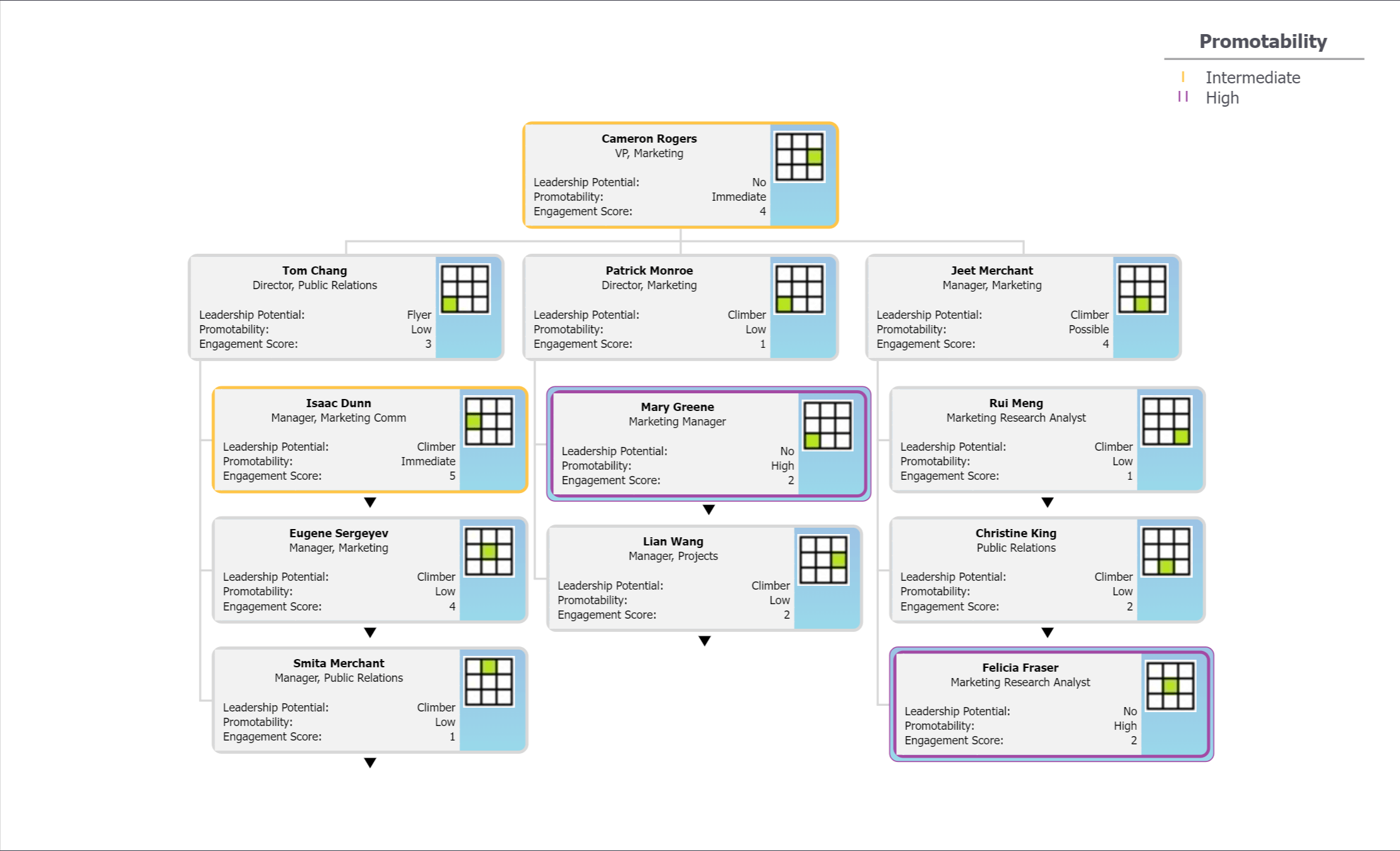October 9, 2019
12:19 PM
By OrgChart Team
At the time of writing, U.S. unemployment is at a favorable 3.7 percent, a figure often regarded as full employment. Yet, workforce challenges such as worker quality, job satisfaction, and employee retention remain prevalent. Indeed, in the face of stiff competition for talent, some companies find themselves so desperate for help that they neglect essential elements such as employee development, leading to a phenomenon known as “talent hoarding.”
Talent hoarding is when managers concentrate so heavily on retaining their employees that they overlook their professional growth. The solution to this issue lies in promoting a culture that values and supports employee development, with leadership championing cross-functional opportunities and emphasizing continuous learning. Reviewing employees’ roles and responsibilities ensures management does not miss growth and development opportunities.
Nevertheless, companies need to encourage or even permit employees’ internal movement to avoid losing valuable talent. Lack of career progress is the top reason employees cite for leaving their positions, as highlighted in Gallup’s 2017 State of the American Workplace report. It revealed 51 percent of currently employed adults actively or passively seek new job opportunities. This suggests companies that fail to prioritize career mobility are most vulnerable to losing talent.
Employees may feel trapped, undervalued, and unfulfilled without opportunities to expand their skills or rise in the organization. This can lead to detrimental consequences:

The lack of career mobility and the resulting employee dissatisfaction often result in an organization losing its most valuable resource — its people. Here’s how talent hoarding can lead to poor retention:
It’s clear talent hoarding poses a significant threat to employee engagement and retention. It’s a concern that organizations must address promptly to maintain a healthy and productive workforce. Implementing strategies to combat talent hoarding, encouraging career mobility, and leveraging HR metrics through tools like OrgChart automation software can improve employee satisfaction, engagement, and retention.
Fostering career mobility within an organization is a proven method for improving employee retention. By encouraging internal movement and personal growth, businesses can build a culture that keeps employees engaged and motivated. This strategy includes offering continuous training and development programs, identifying potential leaders for mentorship, and rewarding employees who take on new challenges or roles.

Holding back your star players from new roles leads to low employee retention and adversely affects market success. Prioritizing talent mobility directly correlates to higher profitability, customer satisfaction, and market share performance. In its Talent Mobility Matters study, the Institute for Corporate Productivity found 74 percent of the companies characterized as bottom performers admitted to hoarding. Moreover, the study found prioritizing talent mobility directly correlates to higher profitability, customer satisfaction, market share, and more market performance.
Thus, mobilizing stars into diverse roles and instilling a big-picture mindset are crucial to address talent hoarding. Bain & Company found top-performing companies (those in the top quartile surveyed) had nearly the same percentage of “stars” in their workforce as the other companies surveyed. In other words, the most successful companies don’t house more star talent than low-performing ones. The difference? They invest in their key players wisely.
OrgChart software can be instrumental in identifying talent hoarding and problem areas by offering a visual representation of the company’s structure. It enables efficient HR data analysis, including metrics that indicate talent hoarding, such as turnover ratio, bench strength, and performance. A free demo of OrgChart software demonstrates how to leverage data you already maintain to get clear insights into such key HR metrics.

Metrics such as turnover ratio, bench strength, and performance rating can provide a clear picture of workforce dynamics, enabling companies to detect trends, foresee issues, and take proactive measures. Efficient use of these metrics contributes to an organization’s overall health and success.
While encouraging worker mobility might seem disruptive or counterproductive to some managers, evidence suggests it is beneficial for the long-term health of your business. Remember, investing in talent development is a continuous effort that boosts your bottom line and ensures your best talent continues to contribute positively to your organization’s growth.
The potential adverse effects of talent hoarding — decreased motivation, increased disengagement, high turnover, and low morale — underline organizations’ critical need for a proactive strategy. Efficiently using HR metrics and the right software tools counters talent hoarding, improves job satisfaction, enhances loyalty, and retains high-potential employees.
OrgChart helps you visualize your organization’s structure, providing clear insights into workforce dynamics. With powerful features that enable the analysis of key HR metrics, OrgChart can support your efforts to promote career mobility, employee engagement, and, ultimately, a healthier and more successful business.
Don’t let talent hoarding undermine your organization’s potential. Request a quote today, and explore how OrgChart can equip you with the tools you need to manage your talent and drive your company’s success effectively. Your employees are your greatest asset — let us help you optimize their potential for the benefit of your entire organization.
Tags: